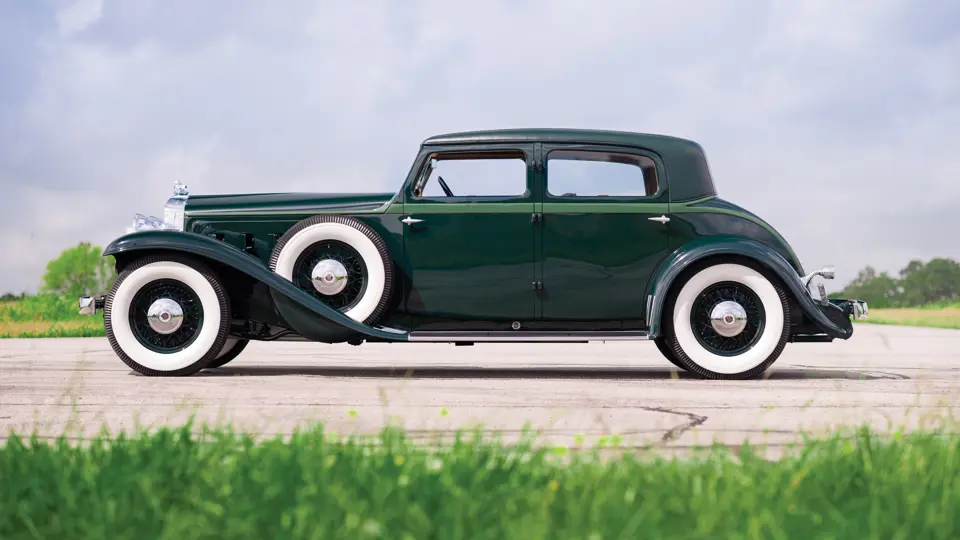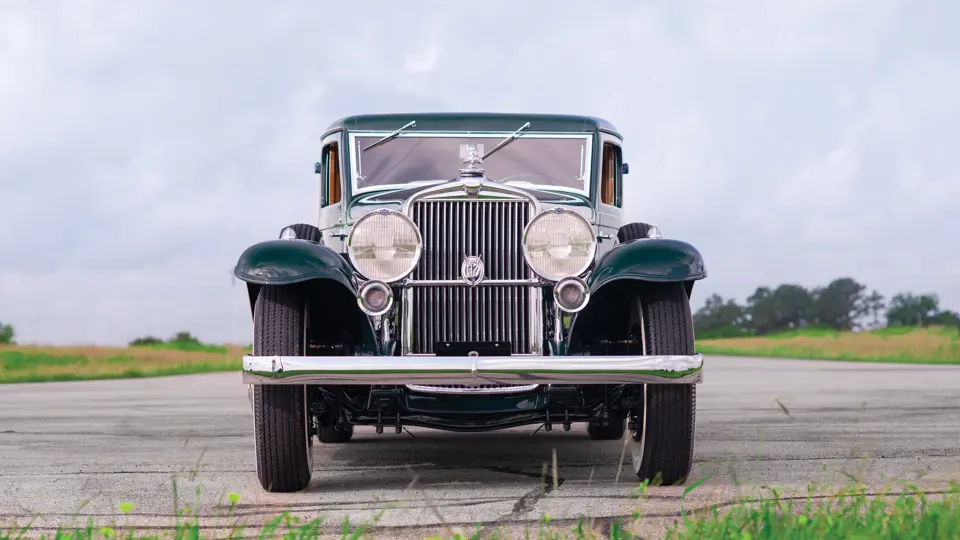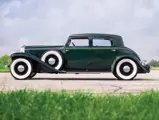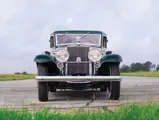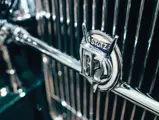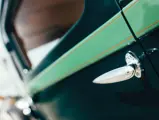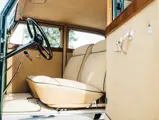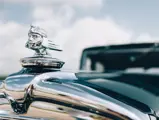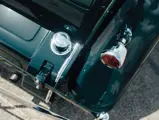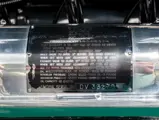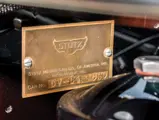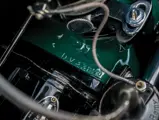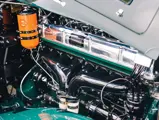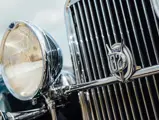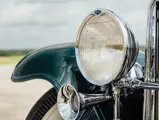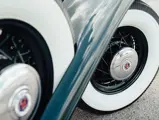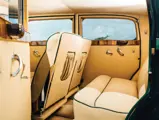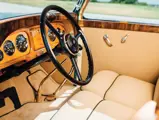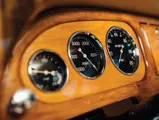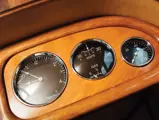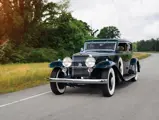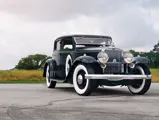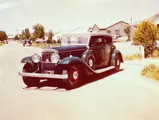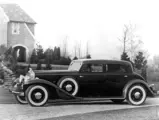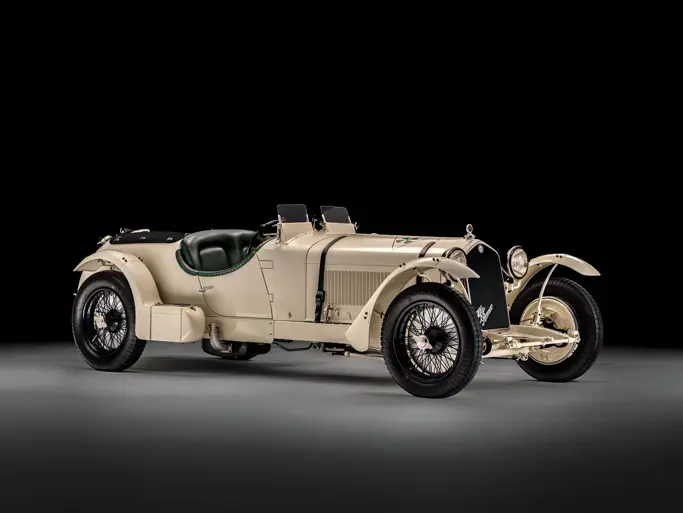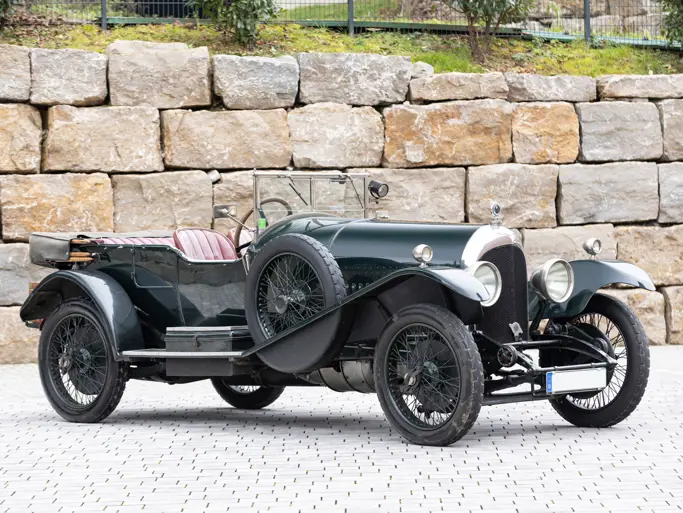
1933 Stutz DV-32 Monte Carlo by Weymann
{{lr.item.text}}
$935,000 USD | Sold
{{bidding.lot.reserveStatusFormatted}}
- Offered from the collection of marque specialist Richard Mitchell
- One of two survivors with aluminum bodywork; unique custom features
- Formerly of the Nethercutt, Harrah, and Ruger collections
- Exquisitely restored by Fran Roxas; fastidiously maintained since
- The ultimate 1930s sport sedan
156 bhp, 322.1 cu. in. DOHC inline eight-cylinder engine, three-speed manual transmission, solid front and live rear axles with semi-elliptical leaf springs, and four-wheel vacuum-assisted hydraulic drum brakes. Wheelbase: 145 in.
Stutz’s DV-32 began with the original Stutz Vertical Eight that had debuted in 1926. As the company did not have the funds on hand to design a completely new engine, they had to make do with this mill for five years, continuously fine-tuning and upgrading it. The DV-32 featured the last iteration of the powerplant, which began as a 322-cubic inch former BB engine that had been redesigned by Charles “Pop” Greuter, the dean of the Stutz engineering department, to include dual overhead camshafts and angled valves above the hemispherical combustion chambers. It was this arrangement that gave the engine its lasting title: the “Dual-Valve 32,” for its four valves per cylinder, with 32 in total.
The upgraded engine produced some 156 horsepower, which was about the same horsepower-per-cubic-inch ratio of the Duesenberg Model J, and this was directed to the rear axle through a Warner three-speed transmission. With a lightweight body, as found on the example offered here, a DV-32 was swift, flexible, and capable of not only 90 mph but also outrunning just about everything but the inevitable.
Only about 200 examples of the DV-32 were delivered during Stutz’s waning days, which finally came to an end in 1935 after a valiant attempt at survival through light truck production. The survivors have long been held among the most valuable and desirable of Stutzes, and they are among the most pleasurable automobiles of their era to drive.
THE MONTE CARLO: PART OF THE CHATEAU LINE
The DV-32 was offered with both factory-built and semi-custom bodies, among them “Chateau Line” offerings by Indianapolis’s Weymann American Body Company, American licensees of the French Weymann body-construction method. Charles Weymann’s design employed a hardwood inner structure, similar to other automobile bodies of the era but covered in layers of cotton batting and fabric, with an outer layer of colored Zapron synthetic leather rather than metal. This design was well suited to performance chassis such as the DV-32, as it was flexible and lightweight, with the bonus of being quiet and “squeakproof.” Perhaps the most dramatic Chateau Line offering was the Monte Carlo, a five-passenger sport sedan with an unusually low roofline and windows and a fully integrated luggage compartment within a smoothly curving tail.
The Monte Carlo was available on DV-32 chassis from 1931 through to 1933. Shortly after production began, a new variant was introduced: the availability of Monte Carlo bodies with more resilient aluminum, no doubt in response to the frustration caused by owners of Zapron-paneled cars over the need for constant repairs. According to the September 8, 1931, issue of The Safety Stutz, these bodies were “special custom built,” indicating that the aluminum paneling was available only to particular customer order.
Today, only two Monte Carlos survive on the last and most-developed 1933 DV-32 chassis, with both being aluminum-bodied. One was donated by the family of its longtime owner, William Abbott, to the Classic Car Club of America Museum, where it is on display today. The second and only privately owned example is that which is proudly offered here.
CHASSIS NUMBER DV-54-1559: THE CONNOISSEURS’ CHOICE
Chassis number DV-54-1559 exhibits several design and styling features that are not known to have been used on other DV-32 Monte Carlos. Most prominently, rather than meeting a traditional cowl, the hoodline is raised slightly and has been extended back all of the way over the firewall to the windshield, creating a so-called “false hood” design similar to that famously used by Raymond Dietrich on Individual Custom Packards of the era. Along with the lowered roofline and relatively low-slung chassis common to the model, the extended hood gives the car an appearance of sinister length and power.
It is no surprise that a car of so many virtues—a unique variant of a desirable semi-custom style on a great performance chassis—would come to be preserved and treasured by enthusiasts. Indeed, the modern history of this Stutz focuses around four great collections, each of which has been highly regarded for the peerless quality of its carefully selected automobiles.
In 1959, the car was acquired from its earliest known owner, Melvin M. Bailey of Wichita, Kansas, by J.B. Nethercutt, a name that needs no introduction among West Coast collectors. Mr. Nethercutt put the Stutz into his stable as acquired and did not get around to restoring it before having the opportunity to purchase his aunt Merle Norman’s successful cosmetics business in 1962. Needing a rapid infusion of cash for the deal, Mr. Nethercutt proceeded to sell his entire 30-car collection en masse to Bill Harrah, the casino magnate and fellow renowned enthusiast, only to be told by his aunt that she had not expected to be paid all at once.
The Stutz remained in Harrah’s Automobile Collection until 1978, the year of Mr. Harrah’s death, and was then sold. Following short-term ownership in the American West, it passed to the next great collector in its history, William Ruger Sr., the Connecticut gunsmith and passionate Stutz enthusiast. In his ownership, the Stutz was featured in the April 1996 issue of Car Collector magazine.
The DV-32 would remain in Mr. Ruger’s family for many years, eventually passing to his son, William Jr., for whom it was beautifully restored by the renowned Fran Roxas in the early 2000s. In a recent telephone conversation, Mr. Roxas recalled that the car began as an excellent and largely original car and was restored with an engine that had been rebuilt with custom titanium con rods, supplied by the talented engineer Mr. Ruger. Upon completion, it was displayed at the 2004 Pebble Beach Concours d’Elegance, where it received a class award.
Now today part of its fourth famous collection, the DV-32 Monte Carlo is offered here from the esteemed stable of the foremost living Stutz authority, Richard Mitchell, of Montgomery, Texas. Mr. Mitchell has subjected the DV-32 to only the very best of care, maintenance, and freshening as needed and has continued to show it on a limited basis. Most recently, it was the recipient of an Amelia Award at the 2015 Amelia Island Concours d’Elegance.
Lightweight, powerful, and perfectly designed, the DV-32 Monte Carlo is quite simply the ultimate 1930s sport sedan—and this car, one of only two aluminum-paneled examples, is the ultimate DV-32 Monte Carlo. It is offered with documentation, including a copy of its Harrah’s file and historic images that attest to its superior state of preservation since the earliest days of car collecting, and it stands ready to add another great name to its roster of prestigious keepers.


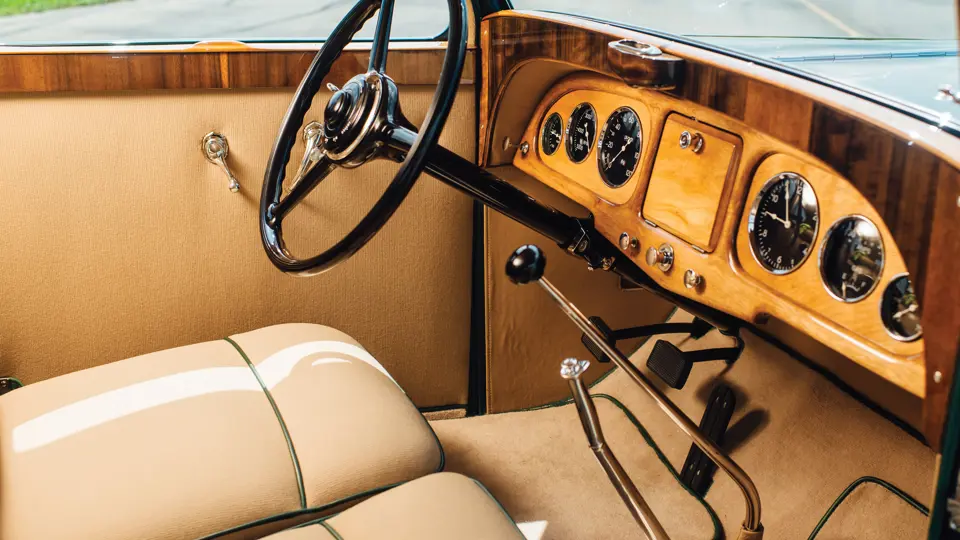

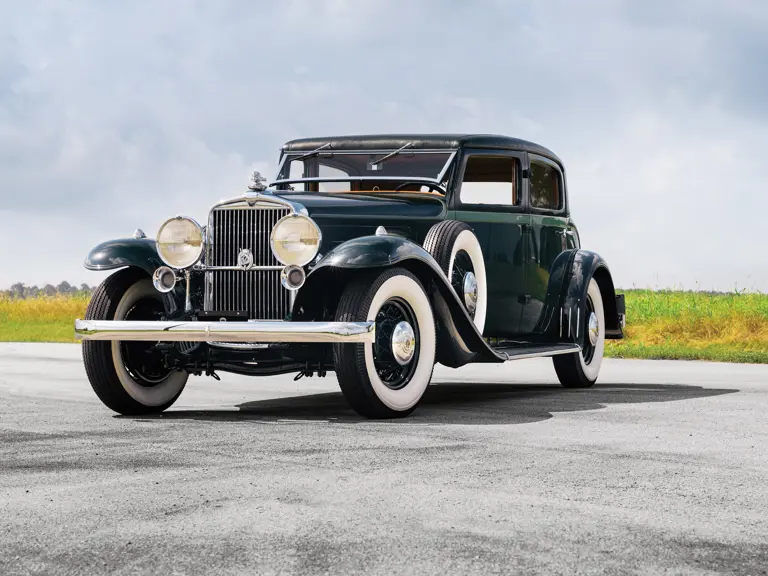
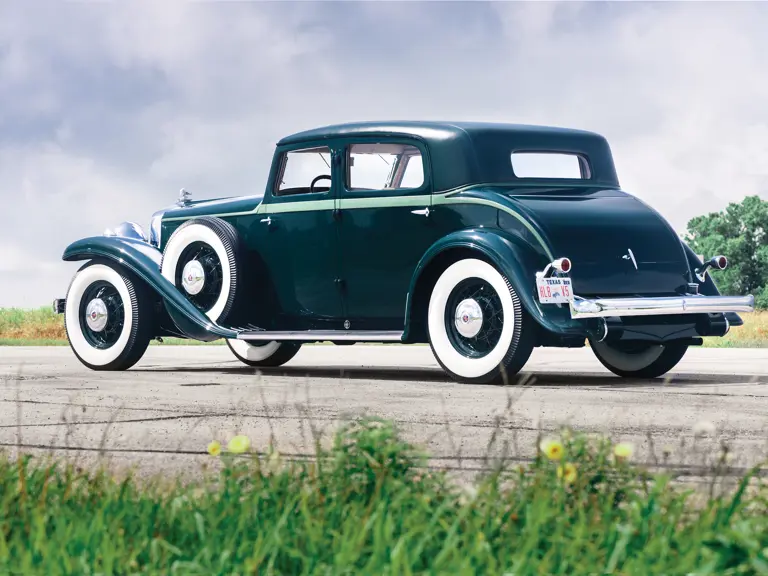



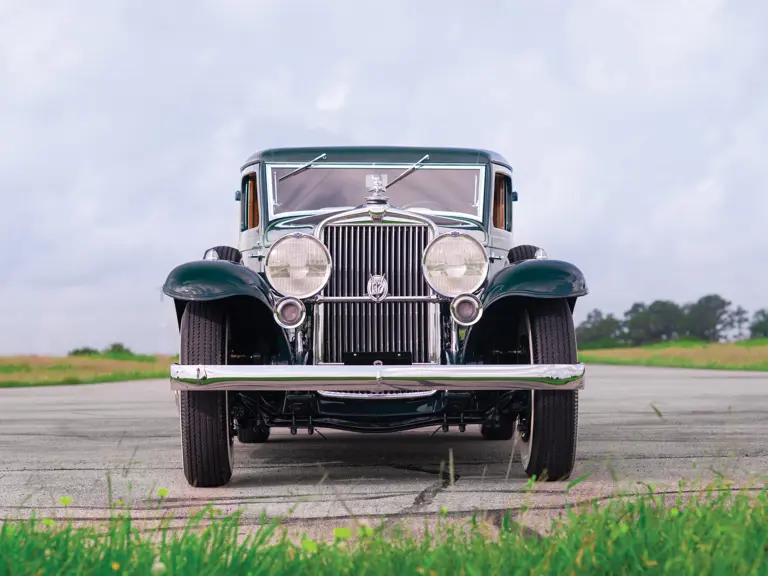
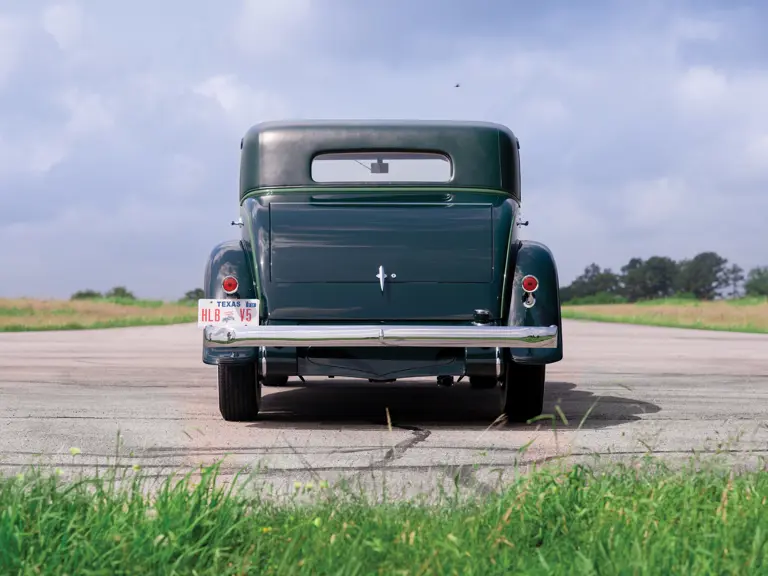
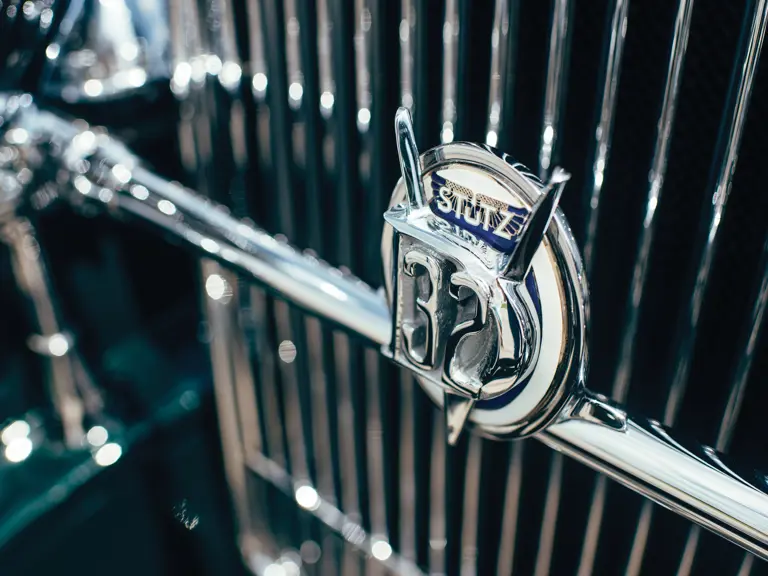
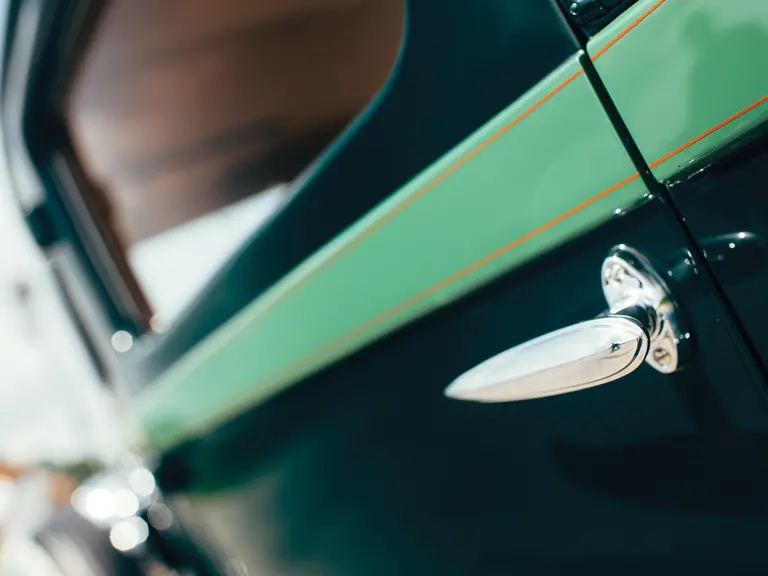
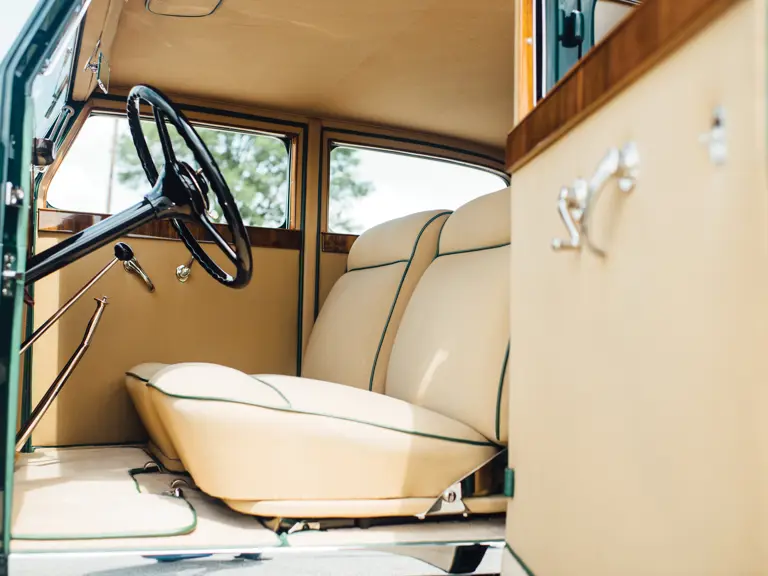
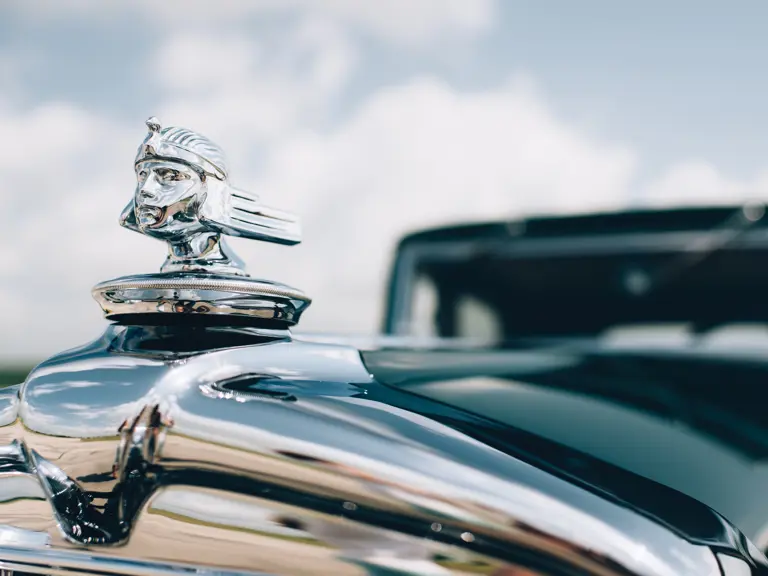
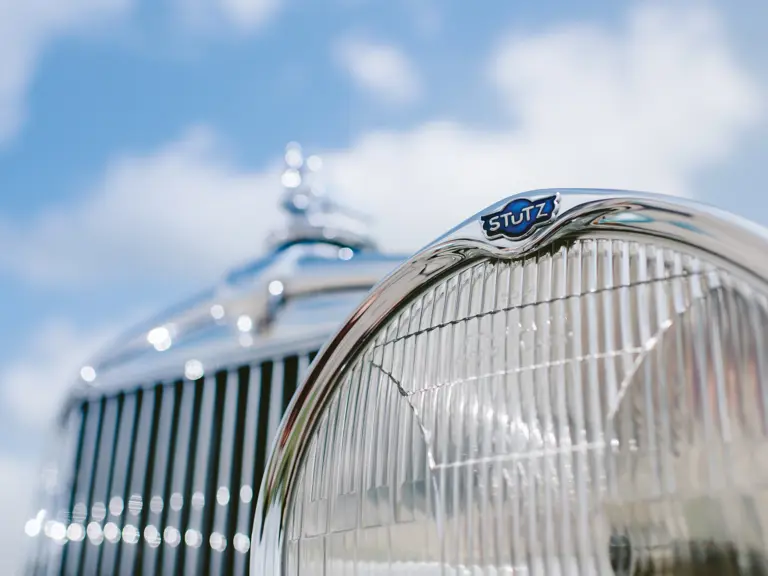
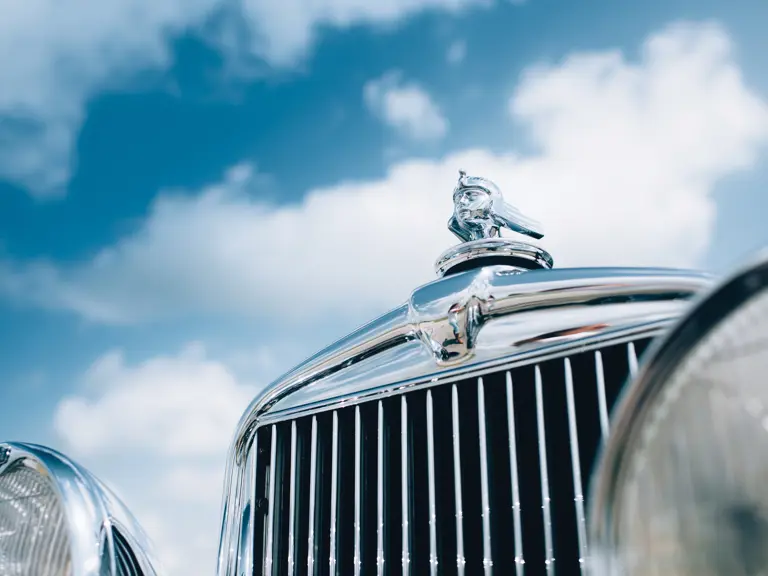
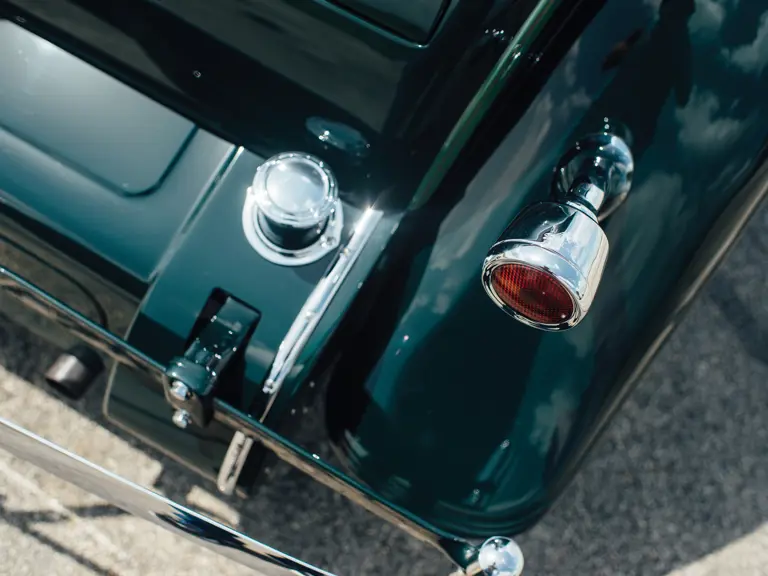
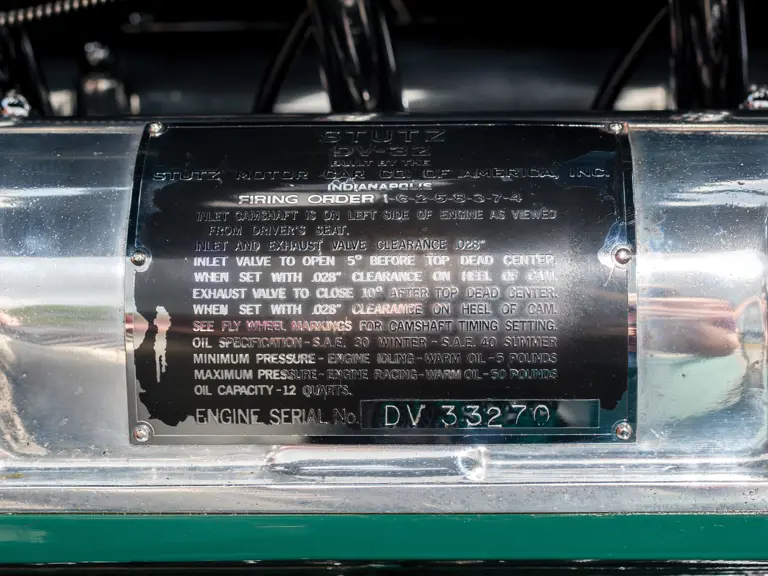

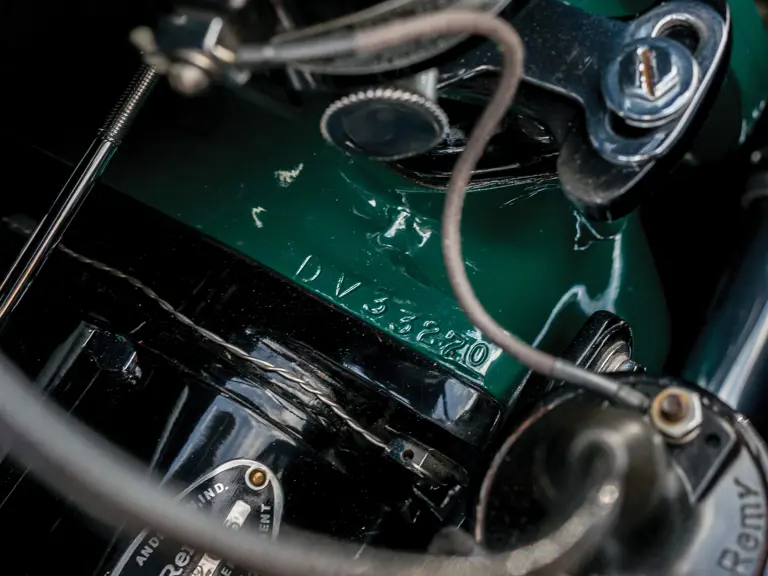
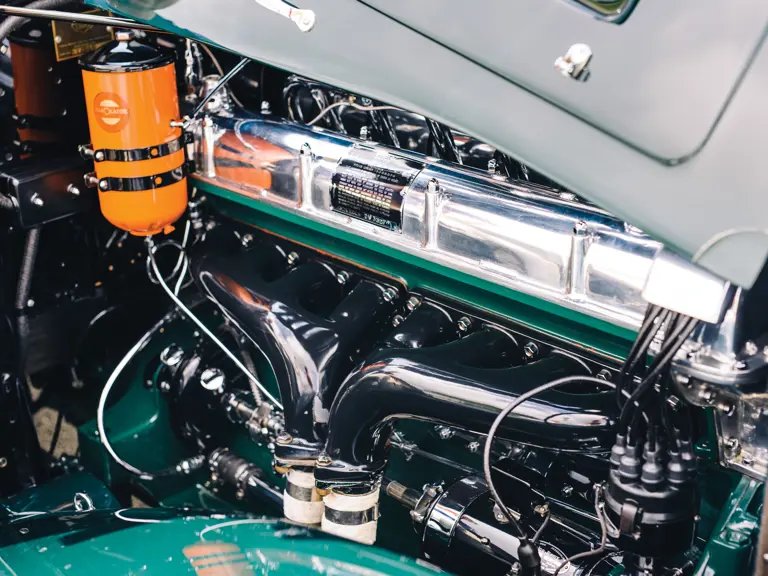

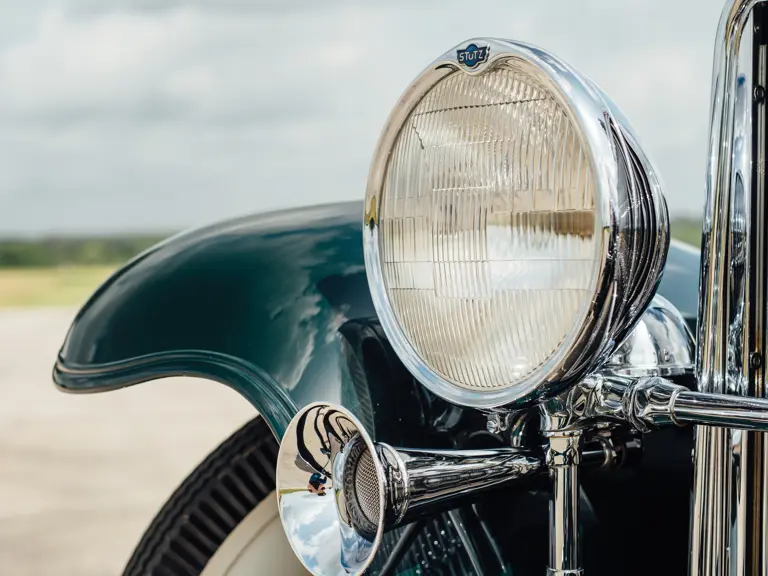
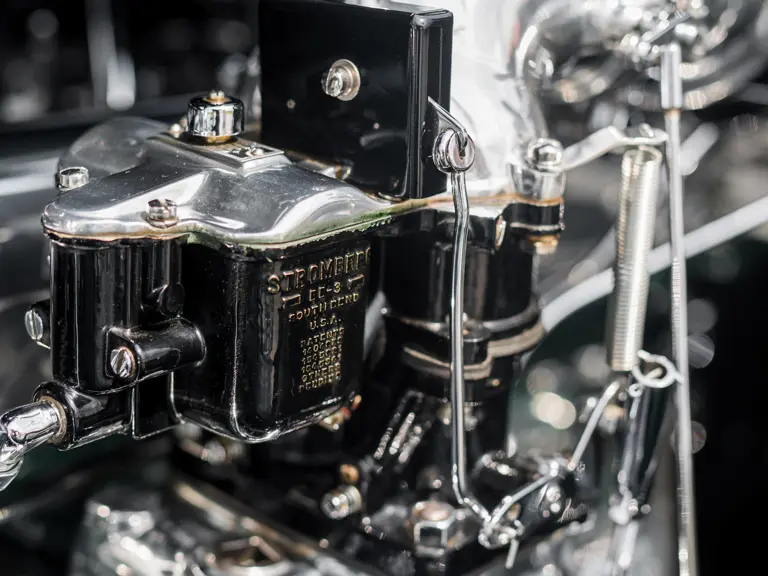
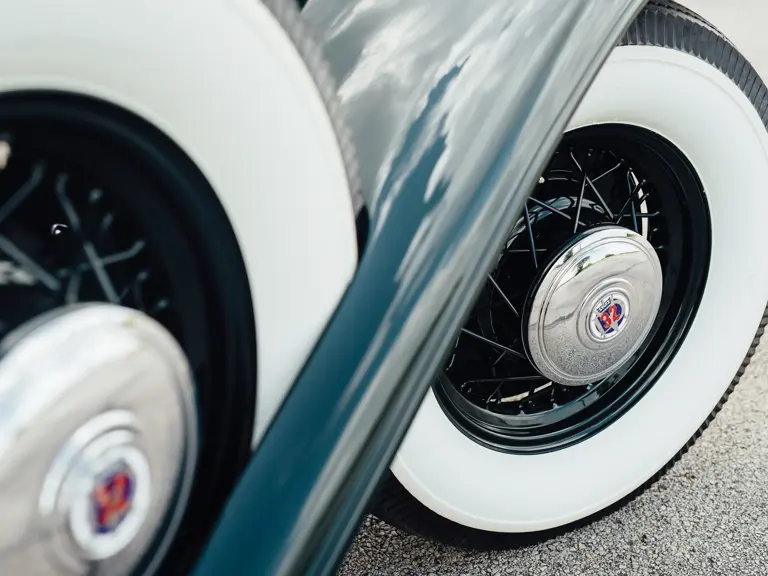

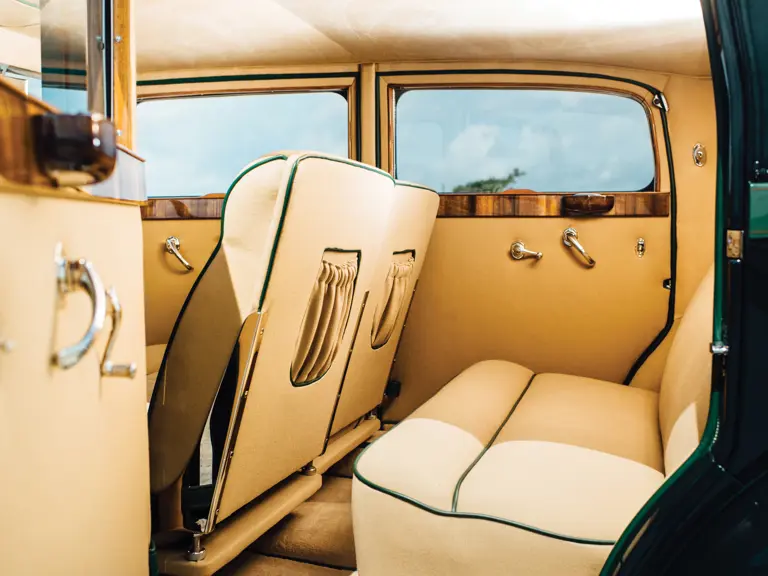
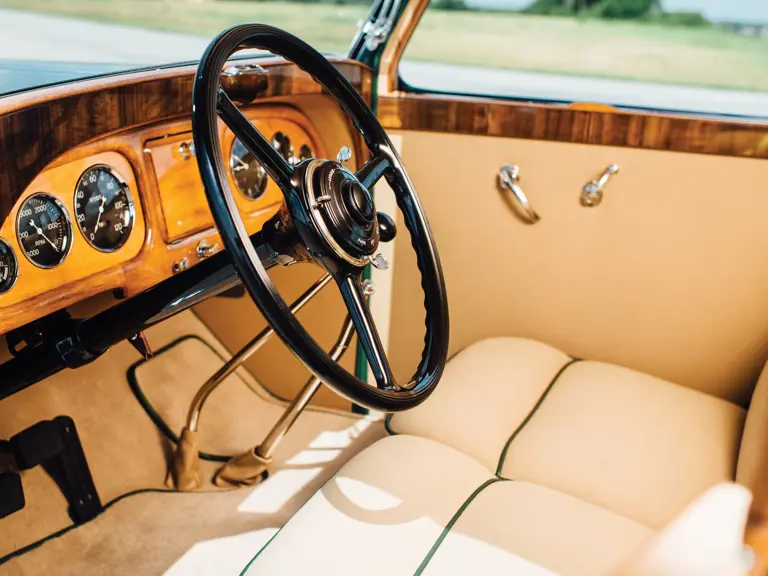
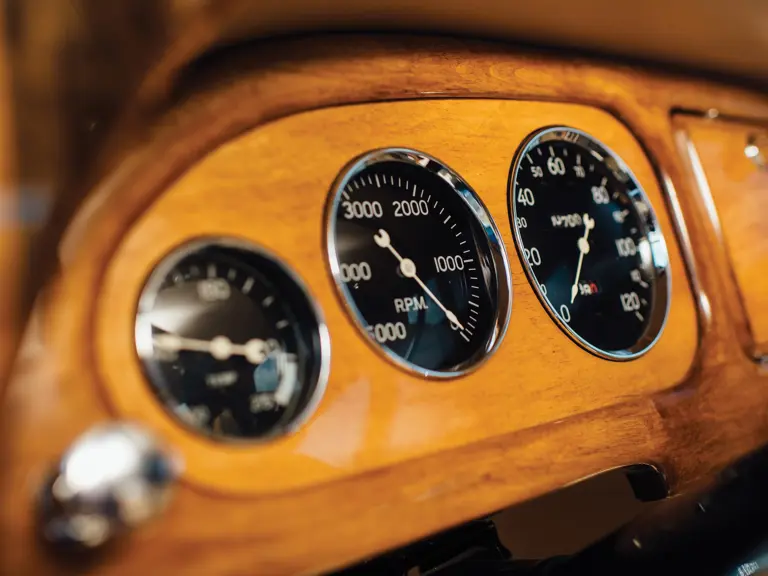
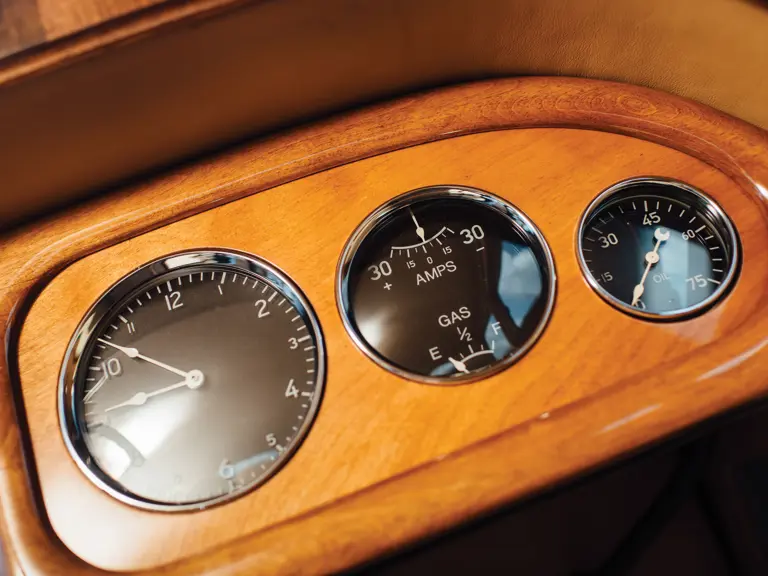
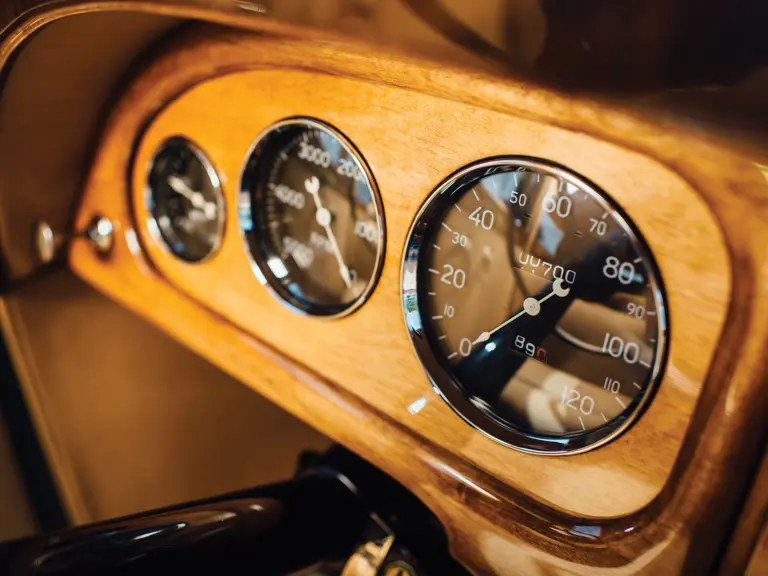

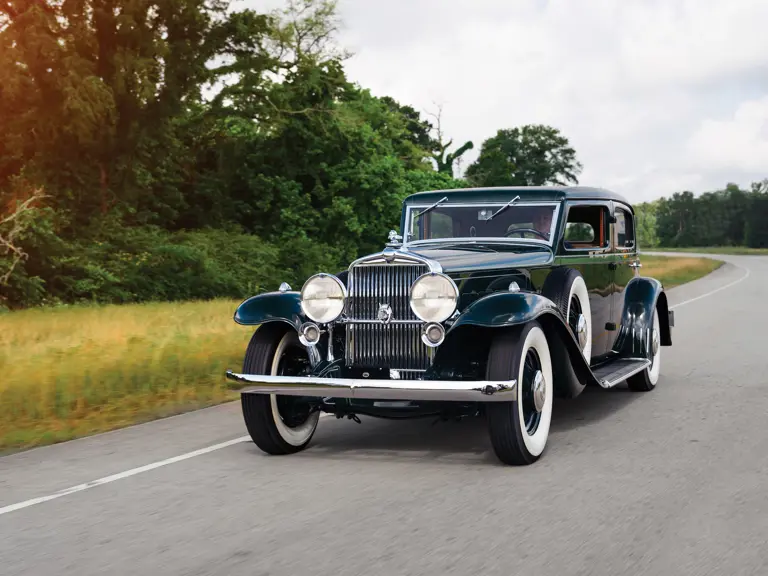
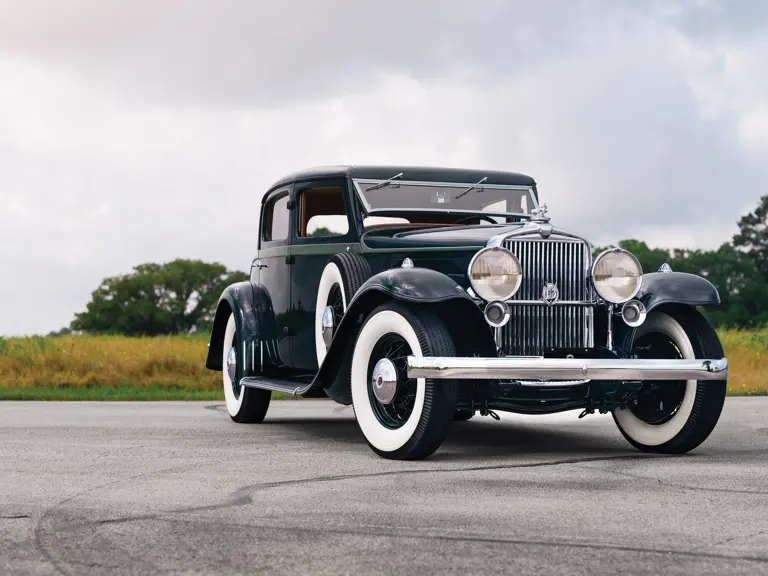

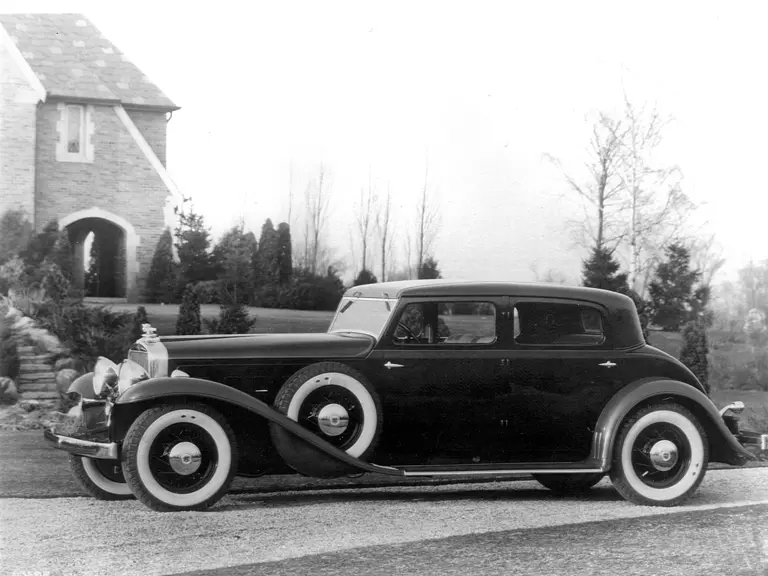
 | Monterey, California
| Monterey, California
